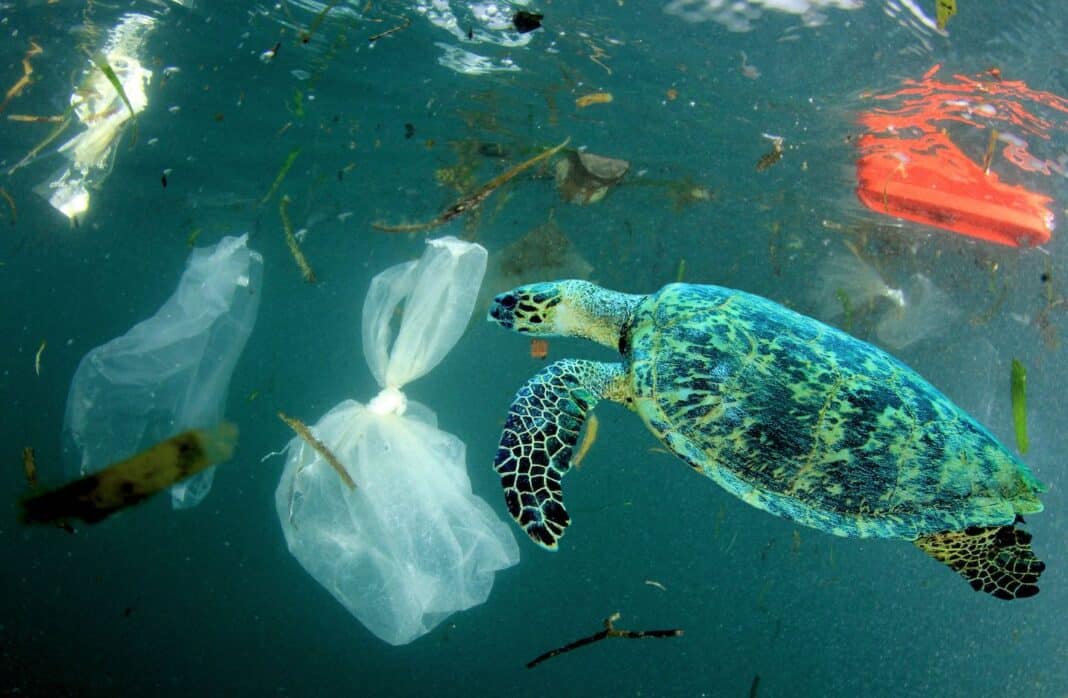Ahead of the next round of United Nations negotiations for a legally binding plastics treaty in Geneva (INC-5.2), an international consortium of scientists this week published a peer-reviewed scientific paper demonstrating the need for the treaty text to include mandatory plastic production cuts as an essential strategy to meaningfully reduce the existential threat of plastic pollution, the agreed mandate of the treaty negotiations.
The world produces more than 500 million tons of plastic every year, equivalent to over 300,000 blue whales or 45,500 Eiffel Towers. Current projections are for plastic production to triple by 2060 if no interventions take place.
Plastic is made from 99% fossil fuels, and scientists estimate that in order to stay within the 1.5°C or 2°C threshold established by the Paris Agreement, primary plastic production needs to be reduced by a minimum of 11.8%–17.3% annually, beginning last year. Plastic breaks up into tiny pieces in the environment — called micro and nano plastics — that have been found in our food, water, the most remote places in the earth as well as in our bodies.
Lead author Tara Olsen of the University of Copenhagen states:
“There is a growing body of literature stressing the importance of ensuring the global plastics treaty includes measures across the full life cycle of plastics and its products. A crucial element of this policy mix is the need to address the growing rates of primary plastics production.”
Based on the available science, the paper concludes:
- Previous international environmental agreements show that voluntary targets do not work– they must be legally binding, and each ratifying country must develop benchmarks to assess progress.
- Global targets must translate to legally binding national targets for all states, based on the principle of common but differentiated responsibilities (CBDR).
- Progress towards targets must be assessed by an independent body of scientists, and targets themselves can be amended based on new scientific research.
- Loopholes like plastic offsets have the same negative effect as carbon credits, undermining reduction efforts. Such policy instruments should thus not be included in the plastics treaty.
The article cites the 1987 Montreal Protocol on Substances that Deplete the Ozone Layer as an example of an international agreement that succeeded in its task of halting the threat of a vanishing ozone layer, precisely because it set a legally binding target, benchmarks and a mechanism for independent assessment.
According to study co-author Dr. Neil Tangri of the University of California, Berkeley:
“History shows that successful international environmental treaties are possible, as long as they have teeth. We can learn from these past successes by enacting a plastics treaty with mandatory production cuts and national plans to achieve them.”
At the last round of treaty negotiations, over 100 countries demonstrated strong support for a global target to reduce plastic production — the majority of UN Member States. While the latest treaty text to be considered ahead of INC-5.2 does include an option for a binding plastic production reduction target, the text has yet to include the need for binding national targets to ensure a global target is reached, as well as a mechanism to assess progress towards reaching the overall goal. There is also no guarantee that a binding target will make it into the final text, according to the scientists.
Study co-author Bethanie Carney Almroth of Sweden’s University of Gothenburg says:
“Indisputable evidence shows that plastic production levels are not sustainable and must be reduced to protect people and the environment. Including globally mandated obligations to reduce production in the plastics treaty can provide tools to achieve this goal.”
Check out the paper here.

